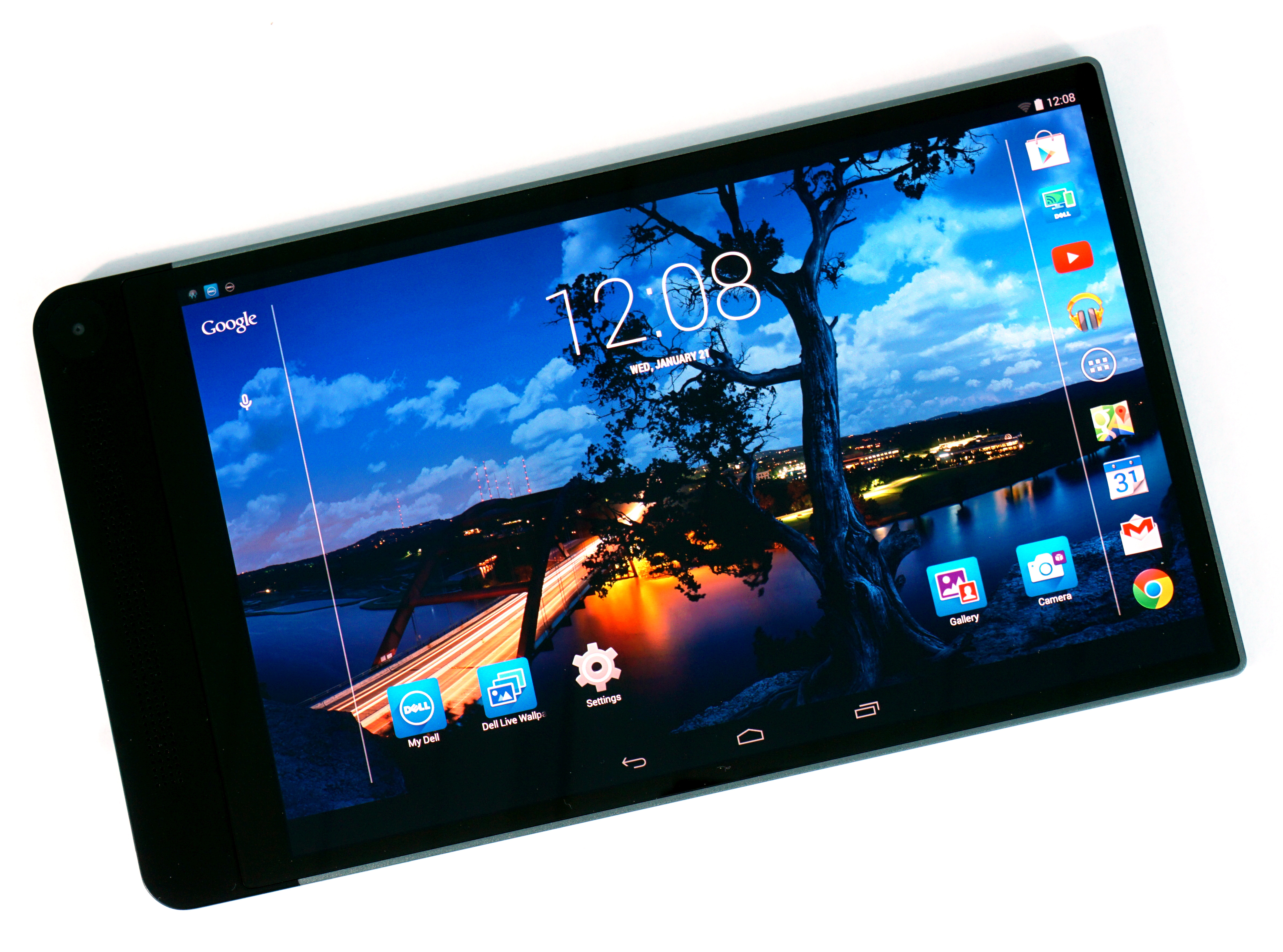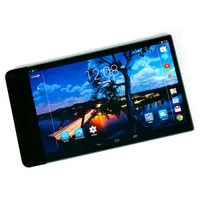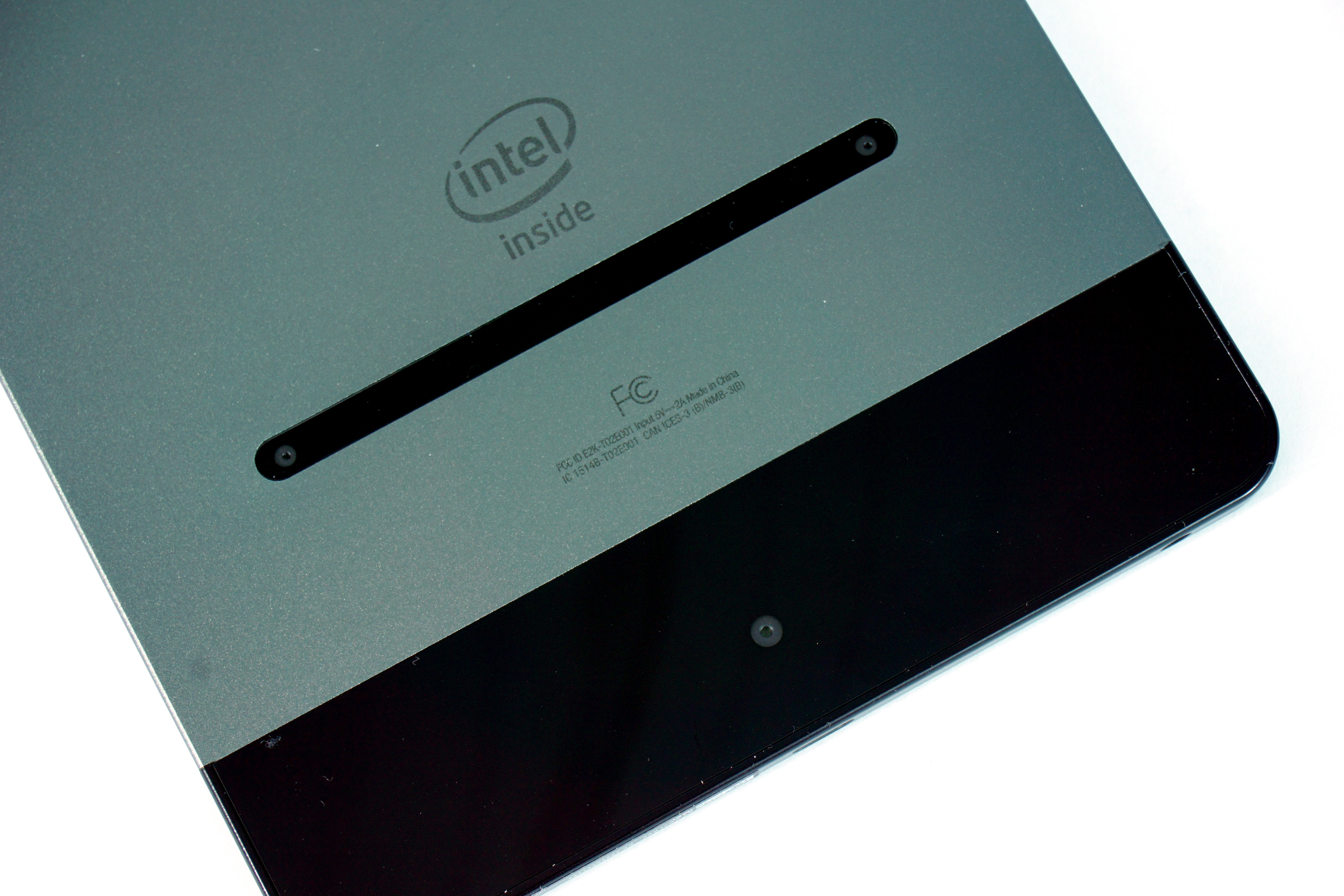Hands-On With Intel's RealSense Snapshot Camera
We evaluated the Intel RealSense SnapShot depth camera mounted on the Dell Venue 8 7000 tablet.
Hands-On With Intel's RealSense Snapshot Camera
I do not care all that much about Dell’s Venue 8 7000 tablet.
That’s not because the tablet itself is uninteresting, by any means. It’s a beautiful device. The 2500x1600 display is crystalline and begs you to touch it. The chassis is incredibly slender at just 6mm thick, with classy, squared-off edges that evoke the design language of the iPhone 5. The dark gray metal frame feels solid, and the “infinity” bezel is wonderfully thin, measuring what appears to be about 1mm thick. I’m also glad to see a front-facing speaker, and I actually quite like the resulting slightly asymmetrical look, even in a horizontal orientation.
And of course, there are some fine specs, to boot:
| Header Cell - Column 0 | Dell Venue 8 7000 |
|---|---|
| SoC | Intel Atom Z3580 (quad-core, up to 2.3GHz) |
| GPU | Imagination PowerVR G6430 |
| Memory | 2GB LPDDR3 |
| Display | 8.4-inch OLED, 2560x1600, 361 ppi |
| Storage | 16GB eMMC |
| Battery | 5900mAh / 21WHr |
| Cameras | 8MP Intel RealSense Snapshot (rear)2MP (front) |
| Audio | Front-facing stereo speakers, MaxxAudio Waves |
| Expansion Ports | MicroSD (up to 512GB)Micro-B USB 2.0Headphone/mic combo jack |
| Connectivity | 802.11ac 1x1 Wi-FiIntel XMM 7260 LTE (optional)Bluetooth 4.0Miracast |
| Weight | 306g (0.67 lbs) |
| Dimensions | 8.5 x 4.89 x 0.25 inches (LxWxZ) |
| Operating System | Android KitKat 4.4 |
| Other | Machined aluminum with Thermoplastic Engineering Polymer ResinAccelerometerGyroscopee-Compass |
| Price | $399 |
Those are some promising specs, but they're not what we’re looking at today. What I am far more interested in at present is the Intel RealSense Snapshot camera(s) mounted on the back of the Venue 8 7000.
We’ve seen enough implementations of RealSense at this point (predominantly at CES 2015) to know that the hardware should be taken seriously. But we also know enough to be wary. RealSense’s limitations, from what we gathered sniffing around at CES, are mostly in the software that various OEMs are using as they bake these camera(s) onto devices.
For example, we found the use of RealSense 3D cameras on the HP Zvr display to be downright impressive, but we also saw a few implementations that were, to be generous, not particularly functional.
There are actually three RealSense cameras that we’re aware of, two of which are more powerful RealSense 3D cameras. The one baked into the Dell Venue 8 7000, the RealSense Snapshot camera, is the littlest brother of the trio. HP’s Zvr display uses four of the bigger versions to achieve its immersive workstation environment. Can the little guy, all by itself on a tablet, produce results that are anywhere near as interesting?
Get Tom's Hardware's best news and in-depth reviews, straight to your inbox.
What It Is
The RealSense Snapshot camera is actually three cameras: an 8MP “normal” camera flanked by two 720p HD cameras. All three are mounted on the back of the Venue 8 7000 tablet, spaced about 80mm apart. When you use the Snapshot, you’re using all three cameras to capture a “depth” image. Not unlike a Lytro camera, this allows you to selectively focus and edit an image after you’ve snapped a picture, right there on the device itself.
You can also simply take normal photos with the 8MP camera using the “Single” shooting mode. To use the three-in-one power of the RealSense Snapshot, you use the “Depth Snapshot” mode.
A key feature of the RealSense Snapshot camera is a tool that allows you to measure distances and objects within photos you’ve taken.
Current page: Hands-On With Intel's RealSense Snapshot Camera
Next Page The Measurement ToolSeth Colaner previously served as News Director at Tom's Hardware. He covered technology news, focusing on keyboards, virtual reality, and wearables.
-
Eggz Looks like it could be pretty useful in the future, once all of the bugs are worked out.Reply
Lens distortion is a real problem when shooting off angle. It's like pointing a projector off-axis at a wall. When you do that, parts of the image get stretched toward one corner and others get shrunk toward the opposite corner (like below).
A similar thing happens in reverse when you take pictures. So that could be throwing off the calculations as well. I'm not sure how they could adjust for that very well. Seems like an interesting challenge. -
g-unit1111 Sounds like it could be useful, I've never had a device with a good camera. Looks like manufacturers are starting to take this kind of photography seriously.Reply -
nroslm Seems like a good sensor fora variety of things, but useless as a camera. Good photos require good glass which costs hundreds or thousands of dollars, this simpy requires to much glass to implement and even for the point and shoot crowd, I'm sure they'd be more happy with resources put into a larger sensor since these devices have no room for more/better glass.Reply -
nekromobo Countries which have not officially adopted the metric system (US, Myanmar (formerly Burma) and Liberia). Please use metric system, enuff said.Reply -
razvanc In the measurement tools defence:Reply
1. The 7 inch brick is actually smaller than the 8 inch ones (you can kind of se it with the naked eye)
2. The door is at an angle. Look down at the picture. That probably hurts the depth estimation and with it the height estimation.
I wonder, to test the reliability of the measurement couldn't you try again. You know measure twice cut one... :) -
scolaner Reply15257401 said:In the measurement tools defence:
1. The 7 inch brick is actually smaller than the 8 inch ones (you can kind of se it with the naked eye)
2. The door is at an angle. Look down at the picture. That probably hurts the depth estimation and with it the height estimation.
I wonder, to test the reliability of the measurement couldn't you try again. You know measure twice cut one... :)
You're right in your "naked eye" assessment--but a major issue, which I address in the article, is that it's nearly impossible to shoot exactly straight on with a device like this. There's no tripod mount (although I'm sure you could rig one up somehow). You're just...holding a tablet.
(Plus, if you need to measure something and have the time to set up a jerryrigged tripod, it would be easier to just use a tape measure.)
And, of course, I "tried again"...I took multiple shots of everything, lol. -
warezme I get the feeling that if this had been an Apple device the writer would have been oozing wet in his underpants and tripping with kudos even on a pre production unit despite all it's foibles.Reply -
Brian_R170 I got a 7840 last week and the software update to enable the measuring function was pushed to it the next day. I had mixed results with the accuracy. It definitely worked best on things that were flat and less than 10 feet away. The photos where I rested my hands on a table and the camera angle was within 10 degrees or so of being perpendicular to the measurement line were accurate to the nearest inch every time. I took several photos of measuring devices (a yard stick and carpenter's square) to make the analysis a lot easier. The worst measurements came when I tried to measure a coworker's height. He is 6'1" and I got values from 5'3" to 5'10". I also got "unknown" occasionally when measuring multiple objects in the same photo, but it worked when I deleted the unknown-endpoints and created them again.Reply




